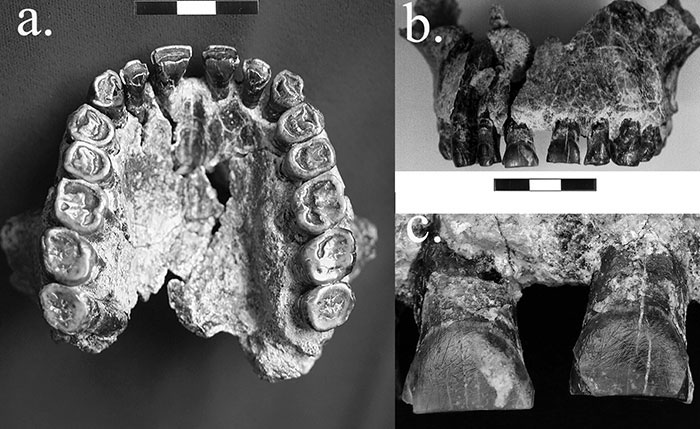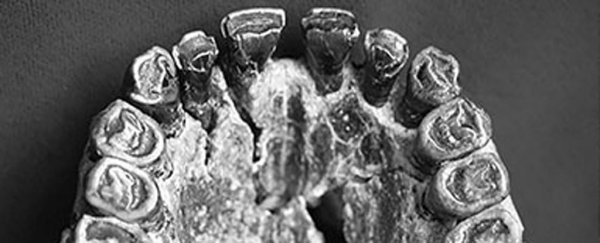Scientists have discovered the earliest known evidence of right-handedness in the fossil record, thanks to markings on an ancient set of teeth that once belonged to a Tanzanian primate.
The 1.8 million-year-old teeth are a remnant of the species Homo habilis, and while one jaw can't be taken as conclusive proof that our ancestors had a right-handed bias like modern humans do, the researchers think more fossil discoveries will indicate such a trend.
The teeth in question belong to a fossil called OH–65, which was found in a stream channel of the Olduvai Gorge in Tanzania back in 1995.
A new analysis of the fossil – which consists of an intact upper jaw with all of its teeth, and part of the lower face – found small cut marks, called labial striations, on the anterior (front) teeth.
 David Frayer/University of Kansas
David Frayer/University of Kansas
These marks, which are found on the lip-facing side of these upper front teeth, mostly veer from left to right. The team suggests they were formed when the primate grasped food in its teeth, pulled it taut with its left hand, and cut it with a tool held in its right hand.
"Experimental work has shown these scratches were most likely produced when a stone tool was used to process material gripped between the anterior teeth and the tool occasionally struck the labial face, leaving a permanent mark on the tooth's surface," says anthropologist David Frayer from the University of Kansas.
Given the coordination required to manipulate this kind of cutting tool – despite the occasional clumsiness that caused the marks – the researchers say it's evident that this particular Homo habilis was right-handed.
If the researchers' conclusion is right, that makes OH–65 the first potential evidence of a dominant-handed pre- Neanderthal, beating out previous fossil discoveries that showed right-handedness in individuals who lived around 500,000 years ago.
Of course, the researchers acknowledge that their "sample of one" isn't conclusive in itself that right-handedness was the norm almost 2 million years ago, but they're confident that examinations of further fossils from this era will show a preference for righties.
"We propose that as more specimens are found, right-handedness, as seen in living Homo, will most probably be typical of these early hominins," the authors explain in their paper.
While there are a lot of hypotheses about why there are more righties than lefties in the world, the scientific mystery has yet to be solved.
So if the researchers are right about Homo habilis, it could tell us more about how human hands work – and, by extension – our brains.
"Handedness and language are controlled by different genetic systems, but there is a weak relationship between the two because both functions originate on the left side of the brain," says Frayer.
"One specimen does not make an incontrovertible case, but as more research is done and more discoveries are made, we predict that right-handedness, cortical reorganisation, and language capacity will be shown to be important components in the origin of our genus."
The findings are reported in the Journal of Human Evolution.
